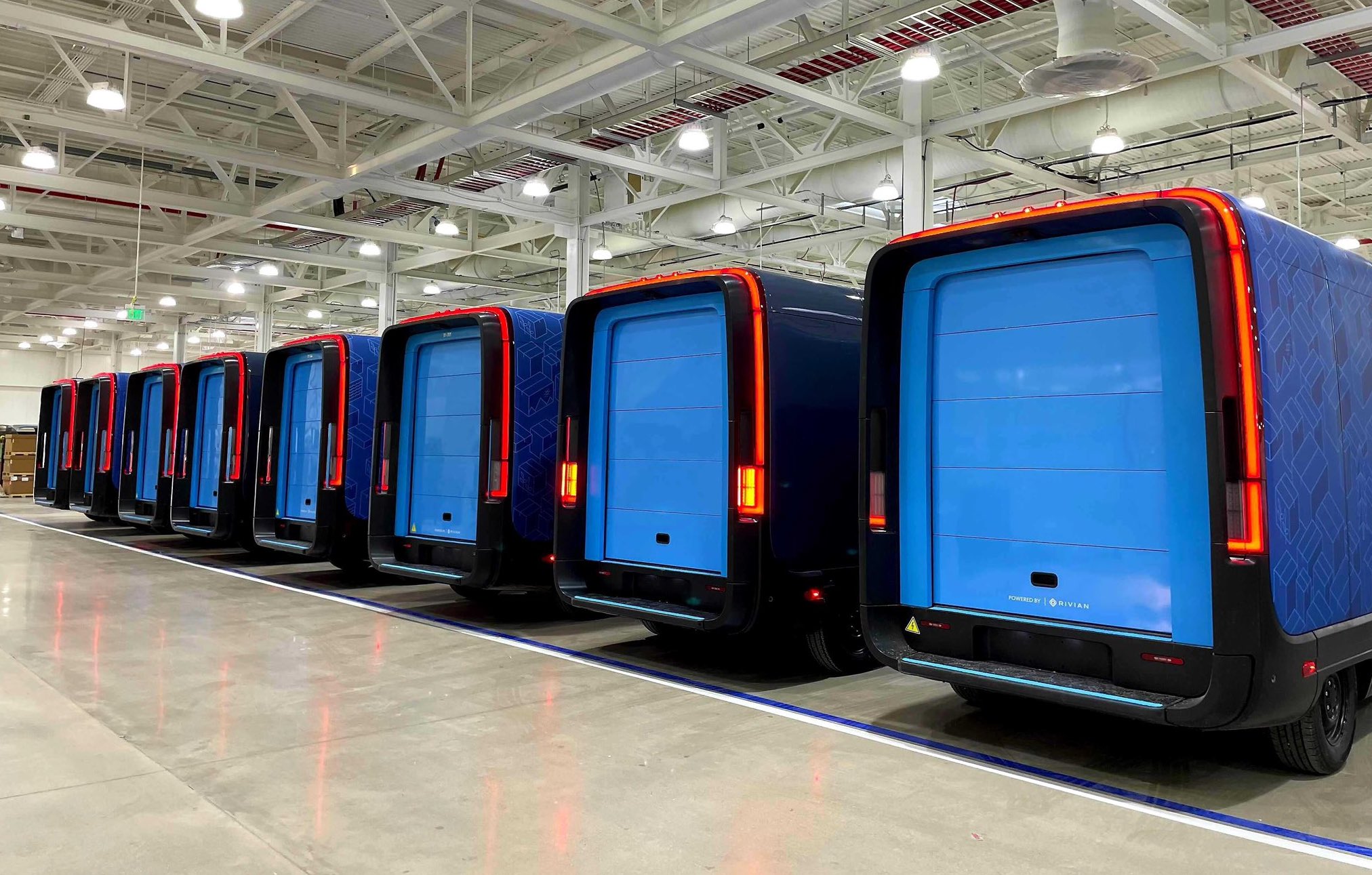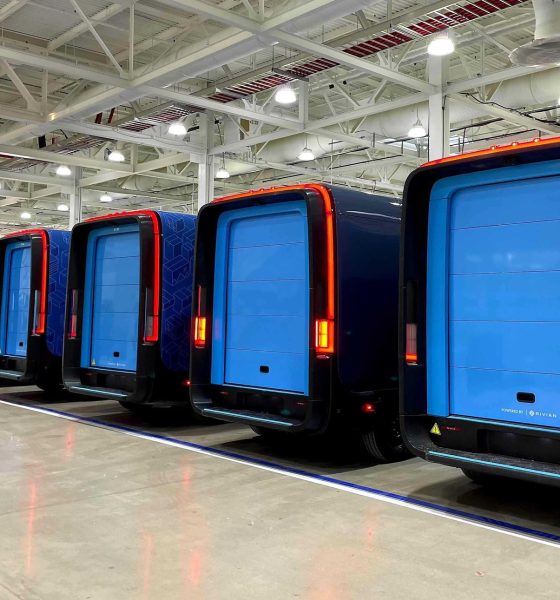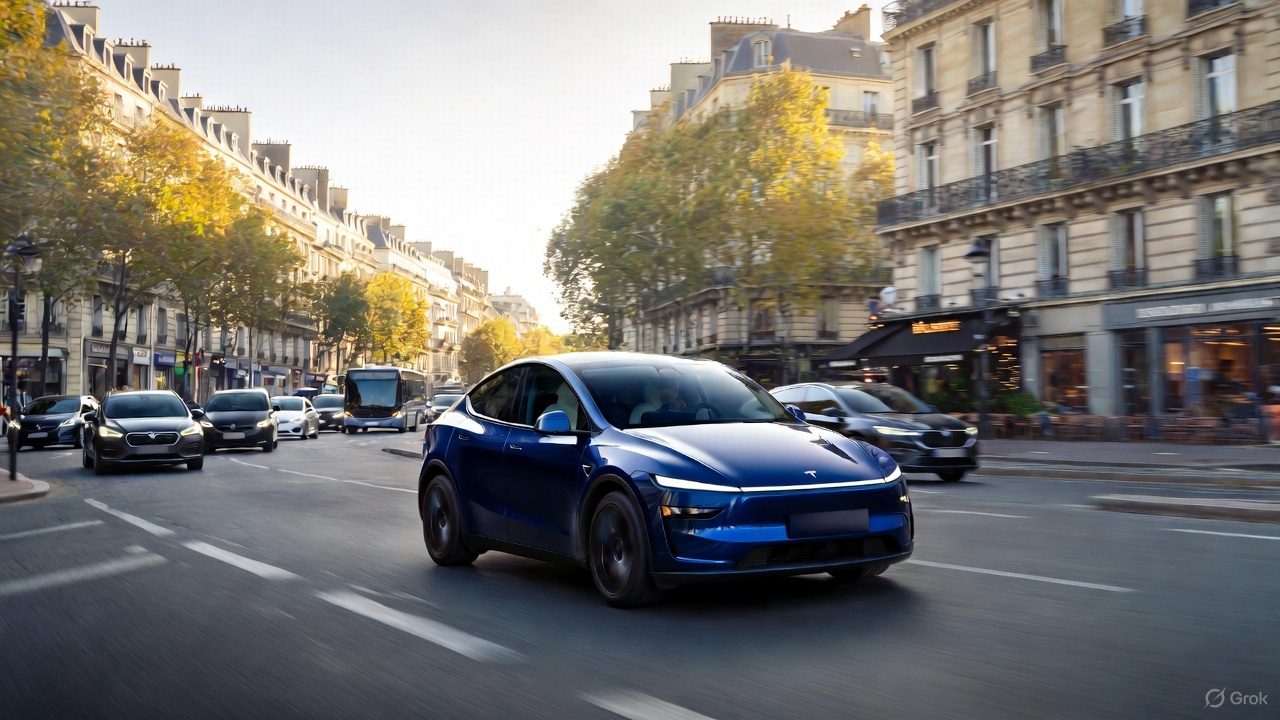

News
Rivian is prioritizing its Amazon delivery vans over R1T production: report
The production and impending deliveries of the Rivian R1T may be catching most of the electric vehicle community’s attention these days, but it appears that the truck maker may actually have a different priority in the near term. As per a recent report, Rivian is prioritizing the production of Amazon’s electric delivery van rather than the R1T pickup and the R1S SUV.
A Bloomberg report noted that Rivian CEO RJ Scaringe has decided to focus Rivian’s production capabilities on its Amazon delivery van project, citing people familiar with the matter. The publication’s sources claimed that the CEO is looking to build about 300 Electric Delivery Vans (“EDV”) by the end of this year, with the first 10,000 units due by the end of 2022. The entire 100,000 order is expected by the end of the decade. In comparison, R1T production is anticipated to run “at a trickle,” at least in the near term.
Prioritizing Amazon delivery van production seems to be a strategic decision for Rivian. After all, having Amazon as a customer is a notable advantage in the electric vehicle sector. Without its Amazon delivery vans, sources reportedly familiar with Rivian’s finances have told Bloomberg that it would be extremely challenging to hit the company’s target valuation of $80 billion when it goes for its initial public offering.
Rivian’s recent S-1 filing with the US Securities and Exchange Commission all but highlighted the close relationship between the electric vehicle company and the e-commerce giant. As per the filing, Amazon will have exclusive rights to Rivian’s Electric Delivery Vans for four years following the delivery of the first van. Amazon gets the right of first refusal to purchase the vans for two years after that point.
“Under the EDV Agreement, we and Logistics have agreed to collaborate to design, develop, manufacture, and supply EDVs and/or certain component parts and related services for use in Amazon’s last mile delivery operations. We also have agreed under the EDV Agreement that until the fourth anniversary of when Logistics first receives EDVs (the “Initial Delivery Date”), whether or not Logistics purchases any EDVs from us, we will exclusively provide last mile delivery vehicles to Amazon, and from the fourth anniversary to the sixth anniversary of the Initial Delivery Date, Amazon will have a right of first refusal to purchase last mile delivery vehicles that we produce,” the S-1 filing noted.
Rivian’s focus on the Amazon delivery van does not come without risks for the electric truck maker. In a statement to the publication, Ross Gale, a New Jersey-based car collector and business owner, noted that the Launch Green Rivian R1T he ordered last November is an exciting vehicle. However, the communication from the company so far has been quite lacking. “I 100% believe in the product, having never seen one, having never touched one. But I am annoyed with the failure to meet promises. I mean, just be honest. Tell us what you’re doing,” Gale said.
So far, Rivian has reportedly received refundable deposits for 48,390 R1T and R1S vehicles. This is a relatively conservative number, at least when compared to the Ford F-150 Lightning, which has received over 150,000 non-binding reservations to date. Unofficial trackers for Tesla Cybertruck orders currently estimate over a million pre-orders for the upcoming vehicle. However, the Rivian R1T and R1S are both premium trucks, which means that they are targeting a different demographic than the F-150 Lightning or the Cybertruck. RJ Scaringe is looking to create the Patagonia of trucks with Rivian, and for such a goal, 48,390 R1T and R1S reservations is not bad to start at all.
The Teslarati team would appreciate hearing from you. If you have any tips, reach out to me at maria@teslarati.com or via Twitter @Writer_01001101.

News
Man credits Grok AI with saving his life after ER missed near-ruptured appendix
The AI flagged some of the man’s symptoms and urged him to return to the ER immediately and demand a CT scan.

A 49-year-old man has stated that xAI’s Grok ended up saving his life when the large language model identified a near-ruptured appendix that his first ER visit dismissed as acid reflux.
After being sent home from the ER, the man asked Grok to analyze his symptoms. The AI flagged some of the man’s symptoms and urged him to return immediately and demand a CT scan. The scan confirmed that something far worse than acid reflux was indeed going on.
Grok spotted what a doctor missed
In a post on Reddit, u/Tykjen noted that for 24 hours straight, he had a constant “razor-blade-level” abdominal pain that forced him into a fetal position. He had no fever or visible signs. He went to the ER, where a doctor pressed his soft belly, prescribed acid blockers, and sent him home.
The acid blockers didn’t work, and the man’s pain remained intense. He then decided to open a year-long chat he had with Grok and listed every detail that he was experiencing. The AI responded quickly. “Grok immediately flagged perforated ulcer or atypical appendicitis, told me the exact red-flag pattern I was describing, and basically said “go back right now and ask for a CT,” the man wrote in his post.
He copied Grok’s reasoning, returned to the ER, and insisted on the scan. The CT scan ultimately showed an inflamed appendix on the verge of rupture. Six hours later, the appendix was out. The man said the pain has completely vanished, and he woke up laughing under anesthesia. He was discharged the next day.
How a late-night conversation with Grok got me to demand the CT scan that saved my life from a ruptured appendix (December 2025)
byu/Tykjen ingrok
AI doctors could very well be welcomed
In the replies to his Reddit post, u/Tykjen further explained that he specifically avoided telling doctors that Grok, an AI, suggested he get a CT scan. “I did not tell them on the second visit that Grok recommended the CT scan. I had to lie. I told them my sister who’s a nurse told me to ask for the scan,” the man wrote.
One commenter noted that the use of AI in medicine will likely be welcomed, stating that “If AI could take doctors’ jobs one day, I will be happy. Doctors just don’t care anymore. It’s all a paycheck.” The Redditor replied with, “Sadly yes. That is what it felt like after the first visit. And the following night could have been my last.”
Elon Musk has been very optimistic about the potential of robots like Tesla Optimus in the medical field. Provided that they are able to achieve human-level articulation in their hands, and Tesla is able to bring down their cost through mass manufacturing, the era of AI-powered medical care could very well be closer than expected.
News
Tesla expands Model 3 lineup in Europe with most affordable variant yet
The Model 3 Standard still delivers more than 300 miles of range, potentially making it an attractive option for budget-conscious buyers.

Tesla has introduced a lower-priced Model 3 variant in Europe, expanding the lineup just two months after the vehicle’s U.S. debut. The Model 3 Standard still delivers more than 300 miles (480 km) of range, potentially making it an attractive option for budget-conscious buyers.
Tesla’s pricing strategy
The Model 3 Standard arrives as Tesla contends with declining registrations in several countries across Europe, where sales have not fully offset shifting consumer preferences. Many buyers have turned to options such as Volkswagen’s ID.3 and BYD’s Atto 3, both of which have benefited from aggressive pricing.
By removing select premium finishes and features, Tesla positioned the new Model 3 Standard as an “ultra-low cost of ownership” option of its all-electric sedan. Pricing comes in at €37,970 in Germany, NOK 330,056 in Norway, and SEK 449,990 in Sweden, depending on market. This places the Model 3 Standard well below the “premium” Model 3 trim, which starts at €45,970 in Germany.
Deliveries for the Standard model are expected to begin in the first quarter of 2026, giving Tesla an entry-level foothold in a segment that’s increasingly defined by sub-€40,000 offerings.
Tesla’s affordable vehicle push
The low-cost Model 3 follows October’s launch of a similarly positioned Model Y variant, signaling a broader shift in Tesla’s product strategy. While CEO Elon Musk has moved the company toward AI-driven initiatives such as robotaxis and humanoid robots, lower-priced vehicles remain necessary to support the company’s revenue in the near term.
Reports have indicated that Tesla previously abandoned plans for an all-new $25,000 EV, with the company opting to create cheaper versions of existing platforms instead. Analysts have flagged possible cannibalization of higher-margin models, but the move aims to counter an influx of aggressively priced entrants from China and Europe, many of which sell below $30,000. With the new Model 3 Standard, Tesla is reinforcing its volume strategy in Europe’s increasingly competitive EV landscape.
News
Tesla FSD (Supervised) stuns Germany’s biggest car magazine
FSD Supervised recognized construction zones, braked early for pedestrians, and yielded politely on narrow streets.

Tesla’s upcoming FSD Supervised system, set for a European debut pending regulatory approval, is showing notably refined behavior in real-world testing, including construction zones, pedestrian detection, and lane changes, as per a recent demonstration ride in Berlin.
While the system still required driver oversight, its smooth braking, steering, and decision-making illustrated how far Tesla’s driver-assistance technology has advanced ahead of a potential 2026 rollout.
FSD’s maturity in dense city driving
During the Berlin test ride with Auto Bild, Germany’s largest automotive publication, a Tesla Model 3 running FSD handled complex traffic with minimal intervention, autonomously managing braking, acceleration, steering, and overtaking up to 140 km/h. It recognized construction zones, braked early for pedestrians, and yielded politely on narrow streets.
Only one manual override was required when the system misread a converted one-way route, an example, Tesla stated, of the continuous learning baked into its vision-based architecture.
Robin Hornig of Auto Bild summed up his experience with FSD Supervised with a glowing review of the system. As per the reporter, FSD Supervised already exceeds humans with its all-around vision. “Tesla FSD Supervised sees more than I do. It doesn’t get distracted and never gets tired. I like to think I’m a good driver, but I can’t match this system’s all-around vision. It’s at its best when both work together: my experience and the Tesla’s constant attention,” the journalist wrote.
Tesla FSD in Europe
FSD Supervised is still a driver-assistance system rather than autonomous driving. Still, Auto Bild noted that Tesla’s 360-degree camera suite, constant monitoring, and high computing power mark a sizable leap from earlier iterations. Already active in the U.S., China, and several other regions, the system is currently navigating Europe’s approval pipeline. Tesla has applied for an exemption in the Netherlands, aiming to launch the feature through a free software update as early as February 2026.
What Tesla demonstrated in Berlin mirrors capabilities already common in China and the U.S., where rival automakers have rolled out hands-free or city-navigation systems. Europe, however, remains behind due to a stricter certification environment, though Tesla is currently hard at work pushing for FSD Supervised’s approval in several countries in the region.








